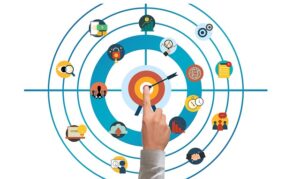A lot of learning is done by trial and error. It is possible to chance upon a solution by trying, and even if the initiative fails, you can gather the lessons and be better the next time. However, there are instances that do not allow for mistakes. Especially the kind of mistakes that can be avoided.
This is where monitoring, evaluation, and learning (MEL) comes in. Through the correct collection and analysis of data, organizations in the development space can make important decisions without the need for risky trial and error.
The purpose of monitoring, evaluation, and learning is to apply knowledge gained from evidence and analysis to improve development outcomes and ensure accountability for the resources used to achieve them. According to GoodPush, we can make sense of the concept of MEL by breaking the words down:
- Monitoring – How you know your programs are happening the way you planned.
- Evaluation – How you know the quality is good and the children are having fun and learning.
- Learning – What can we change or do better based on the new information we have?
Evidently, focusing on regular monitoring, evaluation, and initiatives to improve programs is essential to organizations realizing the goals they set out to achieve. 
Why Monitoring and Evaluation?
Whereas M&E has been conducted for many years, there have been increased efforts to put this framework into practice and connect it with organizations’ core activities, as it provides a consolidated source of information to showcase project progress and manage risk in projects for sustainable change.
Data collected for MEL provides organizations with the information necessary for risk assessment, decision support, resource management, project development, and quality assurance for continuous improvement throughout each of the project stages. Program evaluation of this nature is essential to determine if key performance indicators are in positive zones during the length of the project.
Projects in the development space are about synergy and programs and organizations learning from each other. MEL through the continuous tracking of every stage of a program, allows actors to learn from each other’s experiences and build on expertise and knowledge for other programs. The process reveals mistakes and offers paths for learning and improvements, aids in the formulation of policy and practice.
Development organizations are answerable to several stakeholders including donors, the target community, and governments, and Monitoring and Evaluation frameworks often generate reports that contribute to transparency and accountability. Often stakeholders require efficient MEL structures which can be instrumental in raising funds and influencing policy. MEL also provides a way to assess the crucial link between implementers, beneficiaries on the ground, and decision-makers.
Continuous Improvement
If development organizations conduct Monitoring, Evaluation, and Learning effectively over the life of a program, then they need to quickly incorporate the lessons learned into the program’s interventions to make the program itself more effective. Not utilizing data to fuel worthwhile program interventions is a missed opportunity for organizations and the people that the organizations seek to assist.
Also important to note is the impact that timely data collection can have on the program improvement process. In the time between data collection, data analysis, and planning of the next steps, the situation on the ground in the country of interest may have developed further than the study shows. Accurate and timely data collection and reporting is imperative for donors, NGOs, and governments to assess their effectiveness and communicate their success.
Conduct Monitoring, Evaluation, and Learning with GeoPoll
GeoPoll’s remote mobile survey methodology allows organizations to collect on-the-ground data from granular target populations without the need for on-site survey enumerators, it is truly remote monitoring and management made easy.
GeoPoll’s robust surveying platform and large respondent database provide actionable data that measures project process, demonstrates community attitudes and perceptions over time, and allows organizations to more effectively track the outcomes of project interventions. GeoPoll has multiple survey mode offerings that allow us to reach respondents across all SECs. For fast, cost-effective data within days, contact us today!


